Weight Distribution Hitch Setup
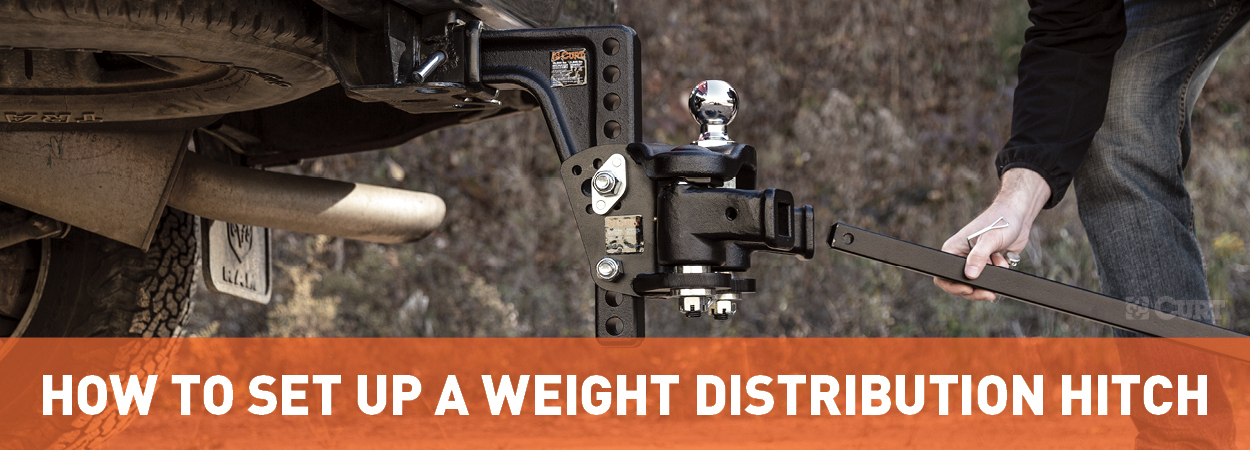

Weight Distribution Hitch Setup
8 Easy-to-Follow Steps!
Weight distribution hitch installation involves leveling the trailer, measuring vehicle and trailer height, mounting the hitch head, shank, spring bars and hookup brackets, and adjusting the weight distribution hitch as needed.
In this guide, we will cover step by step how to set up a weight distribution hitch. Each hitch is unique, so make sure you follow the instructions included with your particular model.
Weight Distribution Hitch Installation Video
Streamline WD setup with your smartphone! Check out BetterWeigh™
How to Install and Adjust Your Weight Distribution Hitch
Step 1: Measure vehicle and trailer height
Park your vehicle and trailer on a level surface and use the trailer tongue jack and a level to make sure your trailer is parallel with the ground.
Measure and record the height of your vehicle and trailer. You will need to know the distance from the ground to the top of the trailer coupler and the distances from the ground to the bottom of the rear bumper and front bumper on your tow vehicle. You can also use the distance from the ground to wheel well if you prefer.
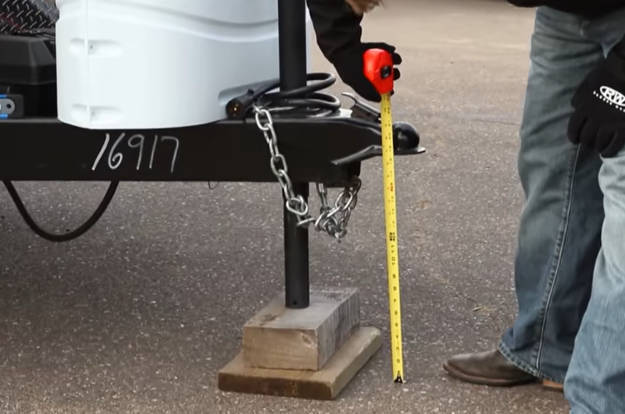

Step 2: Attach the WD shank and hitch head
Insert the weight distribution shank into the receiver tube. Be sure that the shank is fully inserted in the receiver tube of your trailer hitch and secure it using a hitch pin & clip.
Position the head assembly on the adjustable shank. The head should be raised into position so that the top of the trailer ball is one to three inches above the coupler height. Use one mounting bolt at the bottom of the assembly to hold it in place, but do not tighten with a nut.
Need more drop or rise? Shop replacement shanks
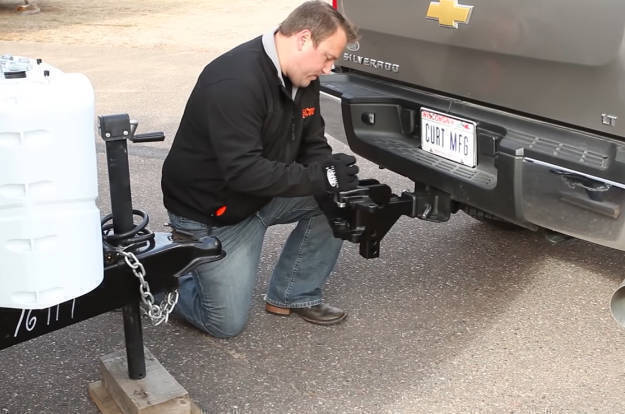

Step 3: Adjust the head
Pivoting the head downward, place two washers on the adjustment rod and insert the rod into the lower hole on the head. Some weight distribution hitches may not require this step, having a different adjustment mechanism. Remember to consult the instructions specific to your weight distribution hitch.
Rotate the head up into the mounting position on the shank. It should be vertical or tilted slightly back. You may need to add or remove washers to achieve the proper angle.
Finally, insert the second bolt into the top hole in the hitch head and fasten both bolts with the provided nuts and washers. Tighten the bolts but only enough to hold the head in place.
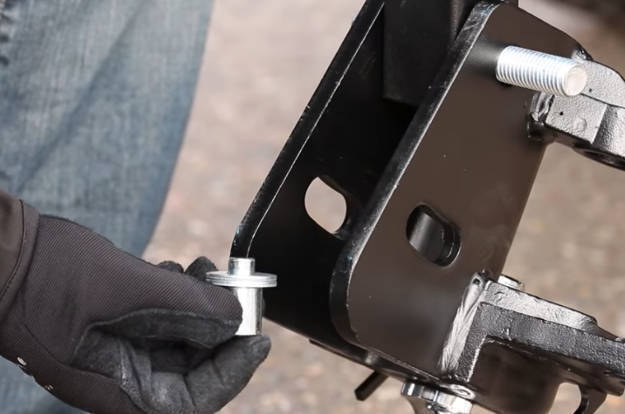

Step 4: Install spring bars and couple the trailer
Mount the spring bars on the hitch head. If the spring bar chains have not yet been attached, attach them to the spring bars before mounting the bars to the head.
Raise the trailer coupler, and back the tow vehicle up to couple the trailer to the trailer ball.
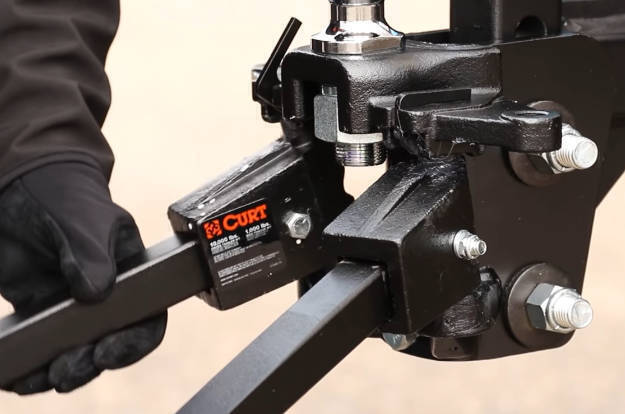

Step 5: Raise the trailer jack
With the coupler latched onto the trailer ball, lift up the coupling point using the trailer jack. The coupler should be raised about three inches above the level position.
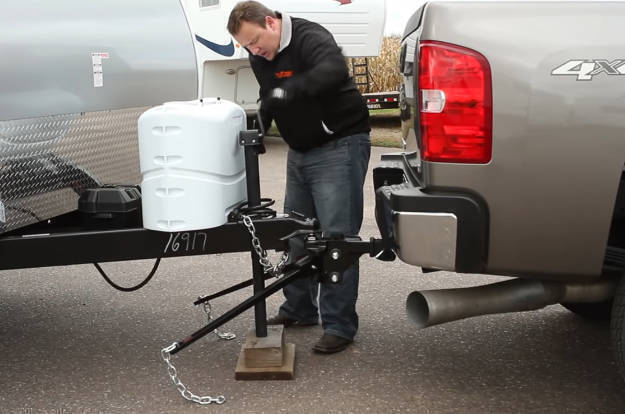

Step 6: Engage the hookup brackets
Position the spring bar hookup brackets on the trailer frame using the spring bar chains as a guide. Mount the brackets onto the trailer frame using the provided bolts.
Then, attach the spring bar chains to the brackets. Make sure both sides are spaced the same vertically, with number of chain links between the spring bars and the hookup brackets. Then pry the brackets into the locked position using the provided lift handle.
Note: There must be a minimum of five chain links between the bracket and the spring bar.
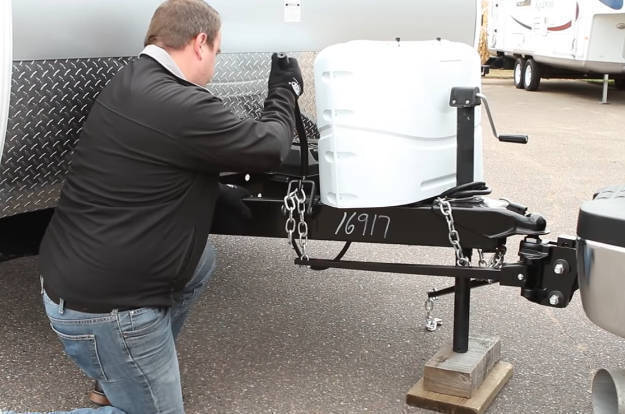

Step 7: How to adjust weight distribution hitch
Retract the trailer jack so that the full weight of the trailer is resting on the hitch. Then, re-measure the distances between the ground and the front and rear bumpers. Each distance should be within 1/2" of the original measurement. If the distances have changed too drastically, you can adjust the number of links on the spring bar chains to increase or decrease tension. You can also adjust the tilt of the head unit.
Step 8: Fully tighten the bolts
Uncouple the trailer and torque all hardware to the values specified in the instructions.
Weight distribution setup differs across various models. With your weight distribution hitch, always follow the instructions provided by the manufacturer, and remember to take your time.
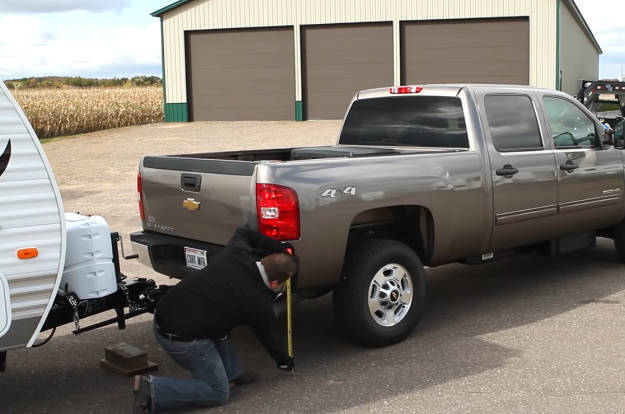

Weight distribution and sway control in one product!
The TruTrack™ weight distribution hitch features an innovative design that levels the vehicle-trailer combination, while actively keeping the trailer from swaying.
No need for a separate sway control unit!
 ARIES
ARIES  CURT
CURT  LUVERNE
LUVERNE  UWS
UWS 



